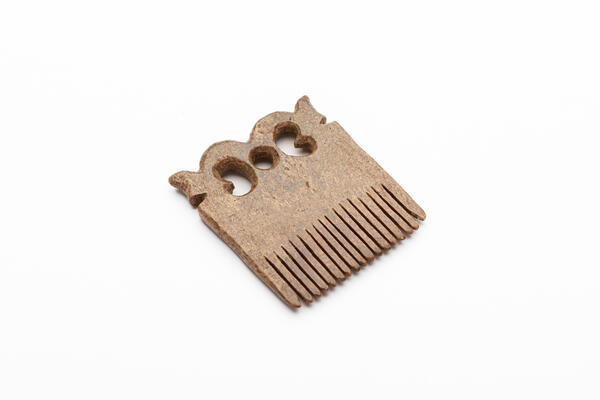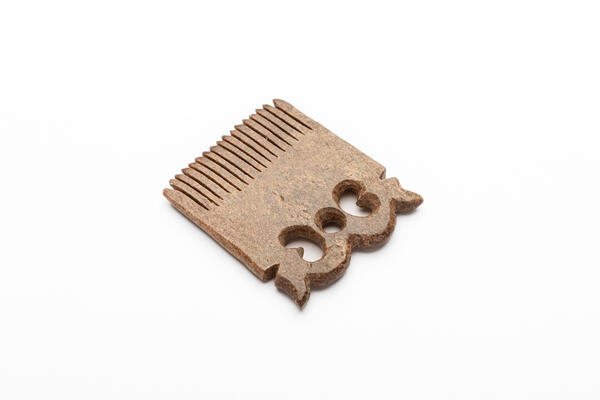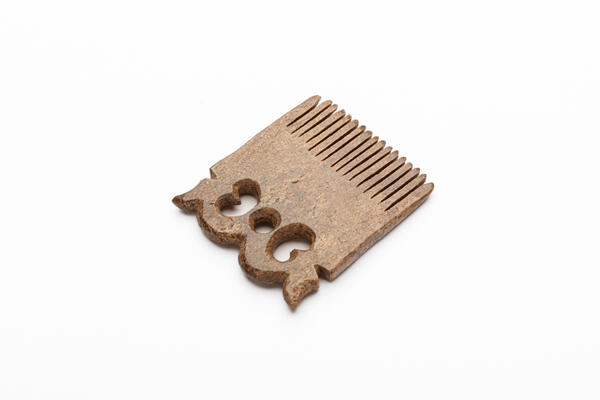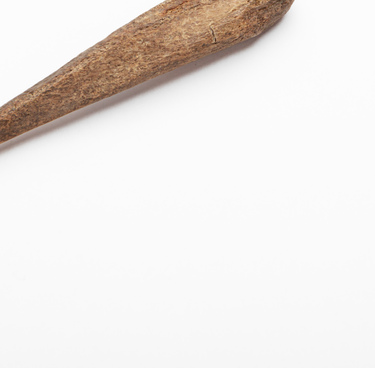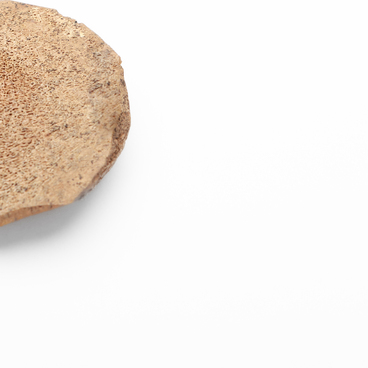The displayed hair comb was made from a single piece of animal bone. It has an openwork handle with shapes resembling two horse heads facing each other. The comb has a hole which enabled fastening it to a belt so that the item was always at hand. One side of the comb is decorated with a scaly pattern, while the other features a triangle pattern.
In the Middle Ages, most people believed in spirits, paganism, shamanism, and totemism. They were superstitious and respectful of signs and rituals. Even the simplest things could be endowed with magical properties: for example, a fang of a wolf or a bear gave the hunter the strength of a wild animal, and the ringing of women’s jewelry warded off evil spirits and bad spells.
A bone comb was a hygiene item; it was used to style the hair and remove parasitic insects. This popular everyday object was often mentioned in the Udmurt folklore. In fairy tales, the comb always protected its owner from evil spirits and helped the main character overcome all challenges.
In the Middle Ages, the outstanding skill of Udmurt bone carvers helped them create true works of art. The combs found at the site of the Idnakar hillfort are elegantly carved and embellished. Idnakar combs were not only used by their owners in everyday life: they also symbolized and reflected their worldview.
The Idnakar Museum houses over 100 one-sided combs with zoomorphic handles, and even though they share a similar design, each of them is unique. A characteristic feature of all Finno-Ugric combs is the top section shaped like horses facing each other. Some scientists call this style a “twin” one.
Compositions with two opposing horsemen appeared before our era in the culture of the Sakas and the Scythians. Images of horses, which were first used in wooden combs, can also be found in brass ones up until the 19th century.
The bone comb from the museum’s collection was found during archaeological excavations at the Idnakar hillfort in Soldyr in 1981. The expedition, consisting of experts from the Udmurt Institute of History, Language and Literature, was organized under the Council of Ministers of the Udmurt Autonomous Soviet Socialist Republic. The openwork comb with the image of rearing horses facing each other is considered unique.

